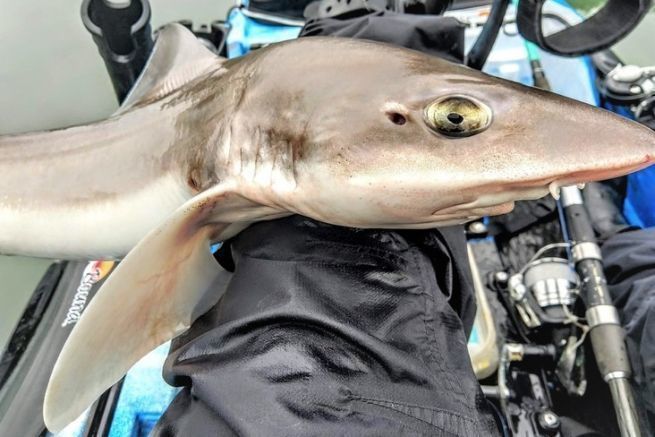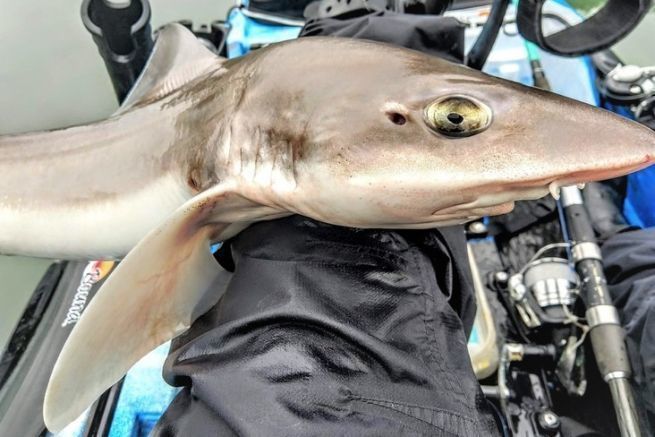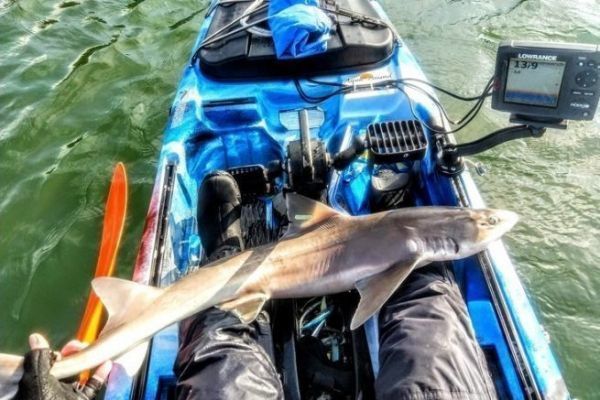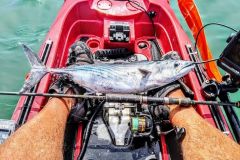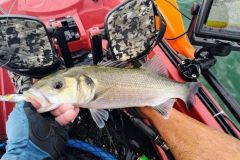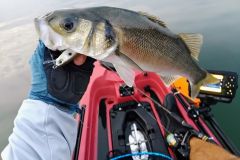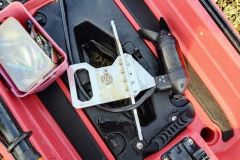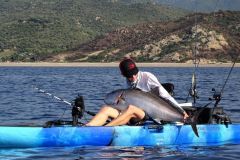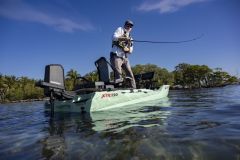Presentation of the spotted emissary
This fish of the shark family is very present at the moment. It frequents the harbor in large numbers from June to September, especially the females, but it is possible to bite them all year round. The species concerned is the spotted shark (mustelus asterias).
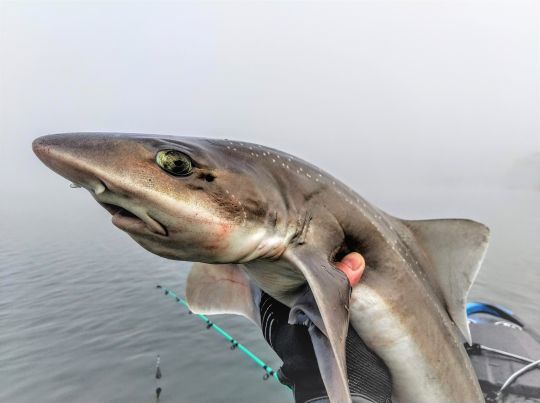
It can be confused with the smooth emissola (mustelus mustelus). This one differs by its dentition and the corner of the mouth, and of course its absence of spots. It is very rare in the harbor and is more frequent in the Mediterranean and southern Gascony.
These fish are crab eaters. This represents 90% of their diet. It is important to know it, because it will determine the way to look for them. Its reproduction is viviparous has placental. This means that the embryos develop in capsules within the uterus of the female. Litters range from 6 to about 30 individuals.
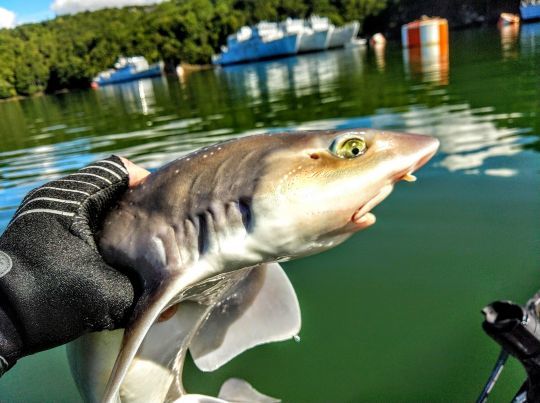
It is a near-threatened species in Europe and vulnerable in the Mediterranean. There is a commercial fishery on it. It is sold under the name of salmonette.
The fishing of the emissole
Most of the fishermen of the Rade practice no kill for this species and it is preferable. It is therefore important to adapt your rigs to make them as painless as possible.
To do this, I use large circle hooks, preferably size 5/0. The leader is made of 45/100 monofilament. They are mounted on a sliding assembly which receives the lead. I use a pear-shaped lead of 50 to 100 grams, depending on the tidal current. The pear shape clings less to the bottom.
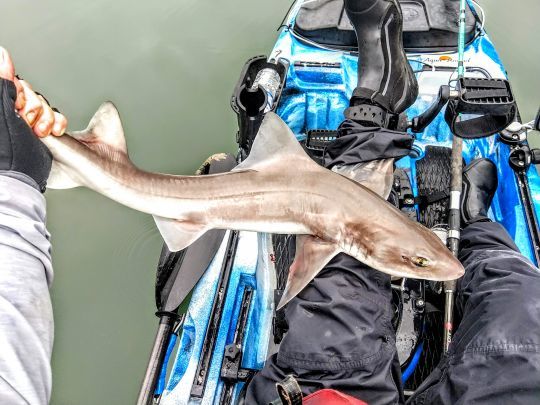
Personally, I fish in drift, I never anchor in a kayak, on the edge of rocks, on mud bottoms. I also select big green crabs, the size of the crabs is also important to interest the nicest fish.
On average, they are fish between 1 m and 1.20 m, they can go up to 1.50 m. This set-up can also decide the big giltheads which also frequent this spot.
The right time
For me, the best time is 01 h 00 before low water and the first 2 hours of rising. The crab drifts slowly on the bottom, we can also tie it with bait ties. I fish practically at the touch, that allows to bite them in edge of mouth. Always in the optics of the best possible release.
Of course, I miss a few, but the ones that are pricked just leave with a little extra piercing.
A monitored species
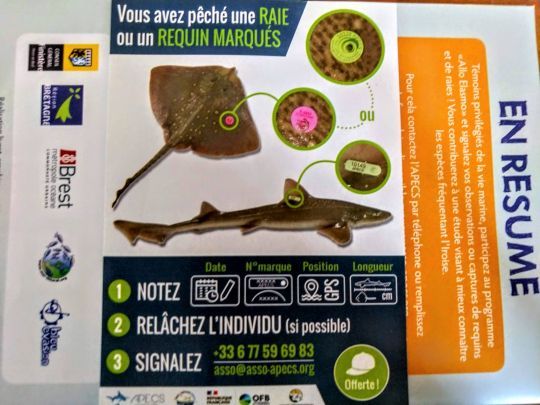
I participate to a tagging program on this species, set up by the APECS (association for the study and conservation of Selacians). Thus, I was already able to mark 3 nice fish. Many things are still to be learned about this wonderful fighter of the Brest bay.
All in video under the rain:

 /
/ 